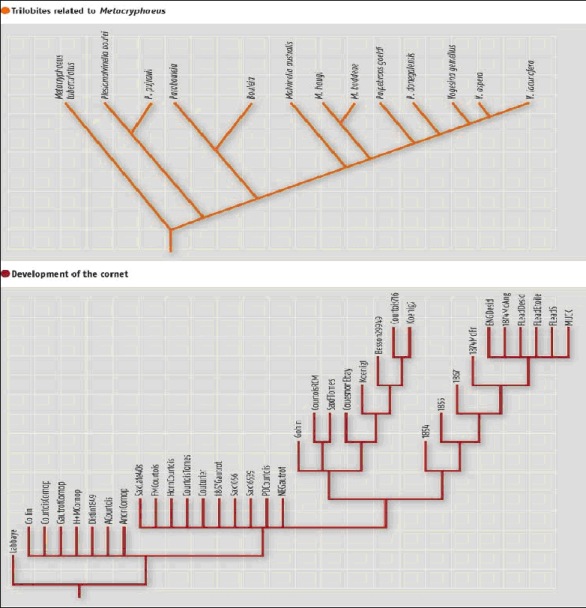Today's riff was inspired by Kevin Kelly's latest book, What Technology Wants. In WTW Kevin discusses the taxonomic work of Niles Eldredge. Niles compares biology and technology, leveraging his expertise of trilobite evolution and applying it to his collection of cornets. The following is an excerpt of Kevin's TED talk on the subject and the related comparison of evolutionary branches between trilobites and cornets.

This is Niles Eldredge. He was the co-developer with Stephen Jay Gould of the theory of punctuated equilibrium. But as a sideline, he happens to collect cornets. He has one of the world's most largest collections -- about 500 of them. And he has decided to treat them as if they were trilobites, or snails, and to do a morphological analysis, and try to derive their genealogical history over time. This is his chart, which is not quite published yet. But the most interesting aspect about this is that if you look at those red lines at the bottom, those indicate basically a parentage of a type of cornet that was no longer made. That does not happen in biology. When something is extinct, you can't have it as your parent. But that does happen in technology. And it turns out hat that's so distinctive that you can actually look at this tree, and you can actually use it to determine that this is a technological system versus a biological system. In fact, this idea of resurrecting the whole idea is so that I began to think about what happens with old technology. And it turns out that in fact, technologies don't die.
Niles monitored the changes in the cornet over a 150 year period. What he discovered is that earlier evolutionary traits returned in later generations, skipping intermediate models. These man made adaptions are contrasted to biology which is bound to step wise evolutionary advantages. He observed that technology appears to have a much longer horizon for genetic memory.
Biological evolution is exhibited by species traits while guided by genetics. In technology the "thing" which evolves to optimize utility is not the object, but the idea or blue prints for the object. The sum of all archived information about a technology is the current state, while instantiations vary according to tastes and teaching. In contrast biological adaptions can be gained or lost over generations.